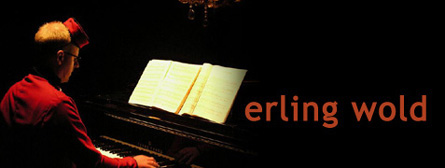If there's anything one doesn't want to do, it is letting The Empress know one is depressed because they aren't getting enough attention for their art. There is no way to more reliably cause her to roll her eyes and maybe kick one down the stairs just on her say-so.
So come with me into the little hidey-hole under the kitchen sink, yes, that's right, I know it's really not for two, but let's just squeeze in, and I'll whisper this: I had planned so much this year and nothing much at all is happening. And it's depressing. I miss it all: the audience's adulation of course, the glowing reviews, the hugs, but also the thrill of creative society, the first hearing of the orchestra, the smell of sweat and greasepaint. It's well-known that we are the most productive when we are busy and, when we are not, well, we are not much of anything at all.
And, to be honest, I am a vain person of great puffery. I remember when I was a little boy I carried around a copy of Ulysses, which I was in fact reading, but about which I also thought it important that people knew that it was a book I was reading. I fed off it: I loved when people said I was the smartest boy there, and I loved the awards and the pettings of the teachers.
I'm not the only one you know. Gravitation was published in 1973, the year before I arrived at CalTech, and at that time it was what Ulysses had been for me, a book one had on the shelf, or lying casually about one's room, making it clear that you were reading it and, by extension, where you were in the order of things. CalTech had a clear caste system with physicists way up on top (Feynman was there, Gell-Mann, Stephen Hawking for a time, Kip Thorne (on book cover above)). After that I'm not even sure of the pecking order, but I was a math major when I got there, and mathematicians were seen as so far outside of the realms of Science that they were simply ignored.
[You know the bit in The Hunt For Red October where Seaman Jonesie, teasing his underling who is failing to identify a whale sound or some such, says, "Beaumont, at CalTech we used to do this in our sleep." Right, we didn't do that or anything like that. It's just one of those Hollywood misunderstandings of any actual profession, at best poorly attempting to attend to their teen demographic.]
Eventually I wandered even more afield from the physics seminarians. I took philosophy classes - - which appealed to me. I always loved the philosophical arguments - can it simultaneously be raining and not raining? (don't ask this of a group of smug and too-smart kids at CalTech), the language-musings of Wittgenstein, and Quine and Hume. I loved the foundations of Mathematics, the paradoxes, the models and the axioms and Gödel and whether axioms were even the thing. I loved the foundations of Quantum Mechanics, the interpretations and Bell and Einstein vs. Bohr and Bohm and the squishiness of it all. Even Gravitation had its kookiness, the "it from bit" of Wheeler, who also wandered through campus from time to time. But then I took Art classes - from the now-Chevalier Aimée Brown Price - and soon. with my roommate Robert Erickson, started to attend the composition classes at Occidental College nearby and fell hard in love. When Occidental gave me a composition award, well, that was it, I was betrothed to music for ever and until death. I did finish at CalTech, but in Electrical Engineering, doing electronic music, and seeing some kind of future there, which has all rolled out for me.


















